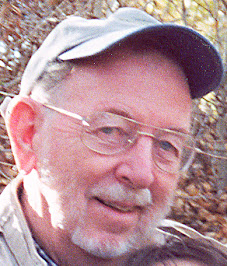To Bomb or not to Bomb?
I don’t now remember the exact date, but about this time in
the summer of 1956, with Hiroshima (August 6, 1945) and Nagasaki (August 9,
1945) on my mind, I asked a Japanese friend what she remembered about WWII. We
had both been children during the war, but old enough to remember things,
especially by 1945.
Midori told me she remembered strafing, but no bombing.
I was an electronics tech (E-5) serving aboard the USS
Hamul, AD-20, stationed at Yokosuka Naval Base. YNB had been the main base of
the Imperial Japanese Navy, but I had been taking it for granted as the main U.S.
naval base in the Western Pacific. (It still is, home port of the
nuclear-powered aircraft carrier Ronald Reagan.)
What Midori said made me think again about YNB. Looking
around from the signal bridge of my ship, I saw a lot of new construction, yes.
But also a lot of really old and obviously unbombed facilities.
YNB guards the entrance to Tokyo Bay and surely had to have
been high on the U.S. list of potential military targets. Including possible
targets for an atomic bomb. They would have been able to see the mushroom cloud
from Tokyo. By 1945 the U.S. had total air superiority over Japan. We
firebombed the major cities and dropped atomic bombs on two mostly civilian
cities. Did we never bomb the main base
of the Imperial Japanese Navy at all?
It took me years to fully deal with that question or face up
to the implications of possible answers. I was a very patriotic and idealistic
young man. On discharge from the Navy I
took a job for a year as a “missile guidance technician” for what became
Lockheed-Martin. I went back to college to prepare for a career with either the
CIA or NSA, majoring in mathematics and taking a year of Russian history and
two years of Russian language.
Eventually, I changed my career path (becoming a college
English teacher, for one thing). And began to seriously look for answers. Here’s what I found:
On April 18, 1942, one of the Doolittle raid bombers (remember
the movie Thirty Seconds Over Tokyo?)
dropped one bomb on YNB on its way to Tokyo. Skip to July 18, 1945, when
Admiral Bull Halsey ordered a dive-bomber attack primarily aimed at the
battleship Nagato, which had been
Admiral Yamamoto’s flagship in the attack on Pearl Harbor, but then was out of diesel fuel and helplessly
moored off to one side of YNB. The base itself was largely undamaged. I think
the strafing Midori remembered was probably strafing to suppress anti-aircraft
fire during this attack.
Top-level U.S. planners early in the war decided to spare
YNB because it would be needed as a key U.S. “forward defense” base in
preparation for WWIII, against Russia or possibly China. Such “forward-thinking”
preparations are apparent in government records, memoirs and diaries of top
U.S. military and government officials of the time, especially in regard to
possible use of The Bomb.
Top admirals and generals, including Eisenhower, MacArthur
and even Curtis LeMay, almost unanimously maintained that there was no military
necessity to use the Bomb at all to force Japan to surrender or to “prevent the
loss of millions of American lives in an invasion of Japan.” That myth was
later fostered by government and media and vehemently believed by most of the
American public.
Top U.S. government officials were focused far beyond Japan
on an anticipated long-term global struggle for power. President Truman’s
closest advisor, Secretary of State James F. Byrnes, for example, in May of
1945 “did not argue that it was necessary to use the bomb against the cities of
Japan in order to win the war [but that] our possessing and demonstrating the
bomb would make Russia more manageable in Europe.” (I’m quoting from The Decision to Use the Atomic Bomb, by
Gar Alperovitz, 1995.)
But the Bomb we “demonstrated” at Hiroshima and Nagasaki in
1945 was a mere toy compared with the level of devastation that would be
wreaked by even one of the thousands of nuclear weapons today in the hands of
seven nations.
Even more scary: the U.S. is conducting a “modernization” of
our nuclear arsenal that will cost an insane $4 million per hour over the next
thirty years, the plan suggesting that our strategists imagine (insanely) the
possibility of a “winnable” nuclear conflict. And, as I pointed out in my
letter to the editor in last Wednesday’s Times-News,
we are now threatening Russia with what looks to them like preparation for a
nuclear first-strike. Taking the world again to the brink of nuclear disaster.
It’s time to end the global struggle for power. We desperately need a global struggle for
peace.
More info at ananuclear.org
and at orepa.org.



No comments:
Post a Comment